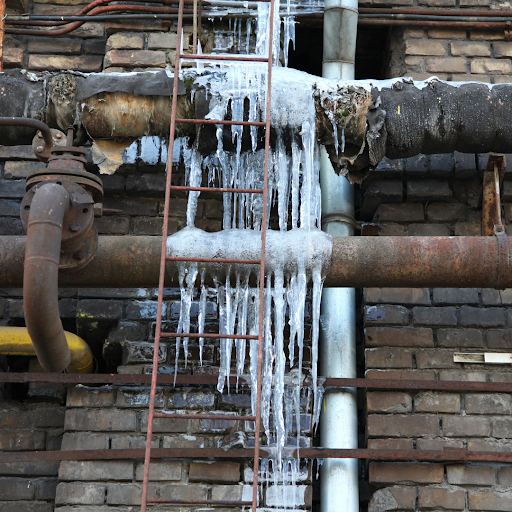Shielding Pipes from Cold Weather Damage: Critical Strategies
Shielding Pipes from Cold Weather Damage: Critical Strategies
Blog Article
Here further down you can discover a good deal of superb insight when it comes to Helpful Tips to Prevent Frozen Pipes this Winter.

Cold weather can wreak havoc on your plumbing, specifically by freezing pipelines. Right here's how to prevent it from taking place and what to do if it does.
Intro
As temperatures decrease, the threat of icy pipelines increases, potentially causing expensive repairs and water damages. Understanding just how to avoid icy pipes is essential for home owners in cold environments.
Understanding Frozen Pipelines
What creates pipelines to ice up?
Pipes freeze when exposed to temperature levels listed below 32 ° F (0 ° C) for prolonged periods. As water inside the pipelines freezes, it expands, taxing the pipe walls and possibly causing them to break.
Dangers and damages
Icy pipes can cause water system interruptions, home damage, and pricey repair work. Ruptured pipelines can flood homes and create comprehensive architectural damages.
Indications of Frozen Pipes
Determining frozen pipes early can stop them from breaking.
How to identify frozen pipes
Try to find lowered water circulation from taps, uncommon odors or sounds from pipes, and visible frost on exposed pipes.
Avoidance Tips
Shielding at risk pipelines
Wrap pipes in insulation sleeves or utilize warm tape to secure them from freezing temperatures. Concentrate on pipelines in unheated or outside areas of the home.
Home heating strategies
Maintain indoor spaces properly heated, particularly areas with pipes. Open up closet doors to permit warm air to circulate around pipelines under sinks.
Securing Outdoor Pipes
Garden pipes and outdoor taps
Separate and drain yard hoses prior to winter. Set up frost-proof faucets or cover exterior faucets with protected caps.
What to Do If Your Pipelines Freeze
Immediate actions to take
If you think icy pipelines, maintain taps open to ease stress as the ice thaws. Make use of a hairdryer or towels taken in warm water to thaw pipelines gradually.
Long-Term Solutions
Architectural changes
Take into consideration rerouting pipelines far from outside walls or unheated areas. Include added insulation to attics, basements, and crawl spaces.
Updating insulation
Invest in premium insulation for pipelines, attic rooms, and walls. Correct insulation assists preserve consistent temperature levels and lowers the danger of frozen pipelines.
Final thought
Avoiding icy pipes requires positive measures and fast reactions. By recognizing the causes, indicators, and preventive measures, home owners can safeguard their pipes throughout cold weather.
5 Ways to Prevent Frozen Pipes
Drain Outdoor Faucets and Disconnect Hoses
First, close the shut-off valve that controls the flow of water in the pipe to your outdoor faucet. Then, head outside to disconnect and drain your hose and open the outdoor faucet to allow the water to completely drain out of the line. Turn off the faucet when done. Finally, head back to the shut-off valve and drain the remaining water inside the pipe into a bucket or container. Additionally, if you have a home irrigation system, you should consider hiring an expert to clear the system of water each year.
Insulate Pipes
One of the best and most cost-effective methods for preventing frozen water pipes is to wrap your pipes with insulation. This is especially important for areas in your home that aren’t exposed to heat, such as an attic. We suggest using foam sleeves, which can typically be found at your local hardware store.
Keep Heat Running at 65
Your pipes are located inside your walls, and the temperature there is much colder than the rest of the house. To prevent your pipes from freezing, The Insurance Information Institute suggests that you keep your home heated to at least 65 degrees, even when traveling. You may want to invest in smart devices that can keep an eye on the temperature in your home while you’re away.
Leave Water Dripping
Moving water — even a small trickle — can prevent ice from forming inside your pipes. When freezing temps are imminent, start a drip of water from all faucets that serve exposed pipes. Leaving a few faucets running will also help relieve pressure inside the pipes and help prevent a rupture if the water inside freezes.
Open Cupboard Doors
Warm your kitchen and bathroom pipes by opening cupboards and vanities. You should also leave your interior doors ajar to help warm air circulate evenly throughout your home.

As a keen reader about How to Prevent Your Pipes From Freezing, I figured sharing that piece of writing was essential. Sharing is caring. Helping others is fun. Thank you for being here. Kindly stop by our website back soon.
Click Here Report this page